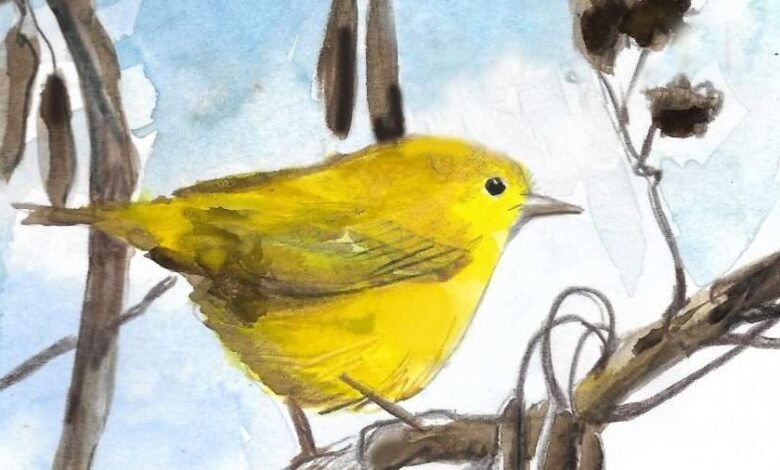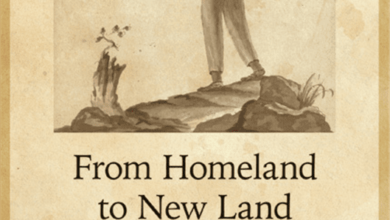Exploring Shrub Swamps – New York Almanack


 A yellowthroat warbler sang, “witchety, witchety, witch,” as I carefully made my way through the tangle of an alder swamp one afternoon not long ago.
A yellowthroat warbler sang, “witchety, witchety, witch,” as I carefully made my way through the tangle of an alder swamp one afternoon not long ago.
I looked about, hoping to catch a glimpse of its yellow breast and black mask. I could hear the twangs of green frogs calling in the distance. A dragonfly zoomed past me, then flew back and landed on my shoulder.
This small swamp formed around a stream meandering through a basin between hills. It is part of a larger wetland complex that includes open fens and forested swamps.
Alder swamps, like this one, are the most common shrub swamps in the Northeast. They can be found in poorly drained basins, along the edges of lakes and ponds, in beaver-created wetlands, and on the floodplains of streams and rivers.
In these areas, the soil is saturated and periodically flooded, making it too wet for trees to grow but too dry for a marsh to develop.
These swamps are dominated by speckled alder, a woody shrub usually less than 20 feet high, with speckled bark and oval, wavy-edged leaves with pointed tips.
In swamps with frequent standing water, alder grows on drier hummocks, where it can form almost impenetrable thickets.
Bacteria in the alder’s root nodules absorb nitrogen from the atmosphere and convert it to a usable form, creating a rich organic soil that helps fertilize other plants.
On my exploration, I noticed other plants growing in association with alders: shrub willows such as pussy willow, silky dogwood bushes with panicles of pale blue fruit; the tall, lavender flowerheads of Joe-Pye weed; and marsh fern scattered among grasses and sedges that formed a moist, squishy mat.
Alder swamps provide food and cover for many species of wildlife. In addition to the common yellowthroat I heard, many other migratory songbirds breed here, such as yellow warblers, alder flycatchers, and northern waterthrush. The abundance of insects and dense cover provide ideal nesting habitat.
Alders develop tiny cones from the catkins that flower in early spring. In fall, the cones open and release nutlets. Goldfinches, redpolls, and ruffed grouse seek these out as food, and grouse also feed on alder buds and catkins.
Woodcocks probe for worms in the damp soil beneath the shrubs. Deer, moose, and beavers browse on alder twigs and foliage. Beavers use alders to build their dams and lodges, while deer and moose will bed down right in the swamp.
Buttonbush swamps – a different kind of shrub swamp – occur adjacent to lakes and large, slow-moving rivers, often in the backwater depressions of floodplains or near a river’s mouth. Flooded by rising river and lake levels in spring, they remain inundated much of the time.
Buttonbush can be identified by its large, shiny leaves, spherical clusters of tiny white flowers, and greenish balls of fruit. This shrub is very tolerant of flooding and is often the only woody plant present.
Buttonbush swamps provide good habitat for several species of frogs, which in turn draw in herons and mink hoping to catch one to eat. The seeds are an important food source for waterfowl and shorebirds.
Sweet gale dominates another kind of shrub swamp, growing on peaty floating mats along the edges of small ponds and slow-flowing streams in cooler places. Sweet gale shrubs have narrow, dark green leaves that are pale beneath.
Like alder, they are nitrogen-fixing. Their spongy fruits float and are dispersed by water. Meadowsweet, leatherleaf, sedges, and small white cedars are common in sweet gale swamps. Loons and black ducks sometimes nest in the protective cover found there.
Shrub swamps generally persist in place unless the hydrology changes due to humans, beavers, climate, or the movement of river channels. Like other wetlands, they make a significant contribution to flood control by absorbing floodwaters and slowly releasing them.
Shrubs reduce streambank erosion and siltation by anchoring shores with their roots, improving water quality, and providing cover and shade for fish and other aquatic animals.
Many shrub swamps have been lost to development and agriculture, but today most northeastern states have wetlands protection laws. Invasive species such as purple loosestrife, reed canary grass, and European buckthorn can crowd out native species, and threaten the diversity of these unique habitats.
When viewed from afar, shrub swamps may appear to be an unattractive monoculture of brush. However, if one spends time here and looks closely, the important role they play in flood mitigation, erosion control, and providing habitat for an abundance of species becomes apparent.
Read more about wetlands in New York State.
Susan Shea is a naturalist, writer, and conservationist based in Vermont. Illustration by Adelaide Murphy Tyrol. The Outside Story is assigned and edited by Northern Woodlands magazine and sponsored by the Wellborn Ecology Fund of New Hampshire Charitable Foundation: nhcf.org.
Source link




